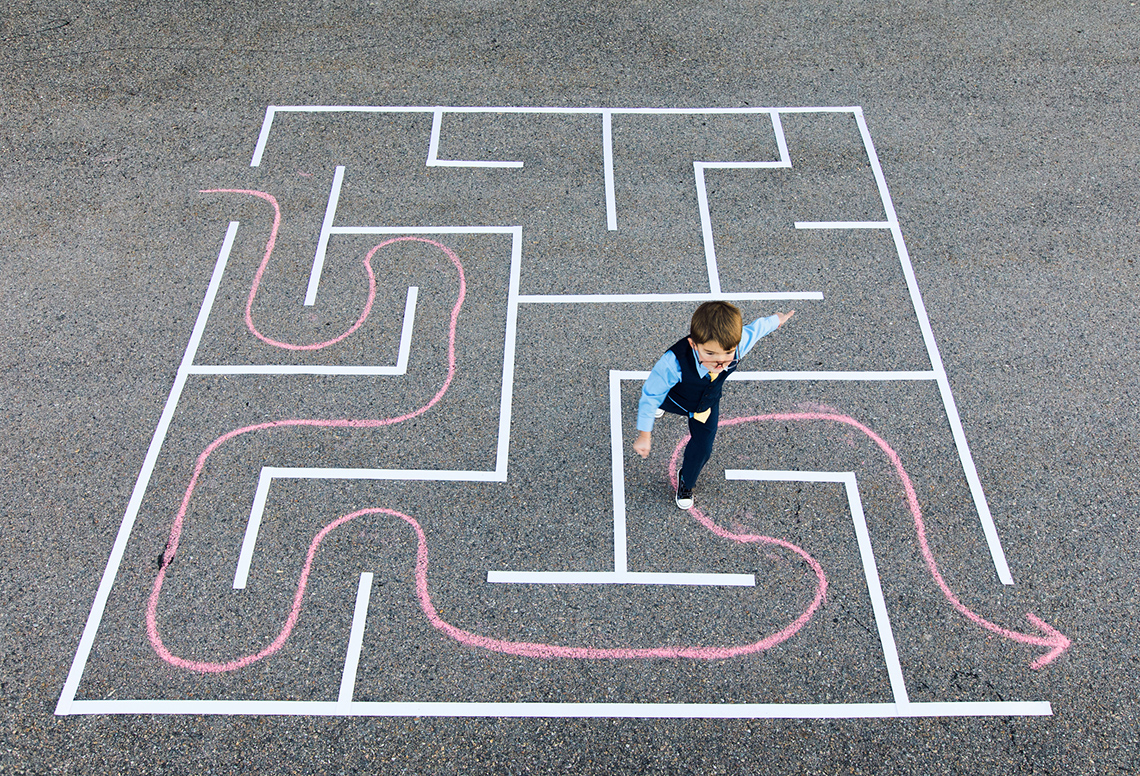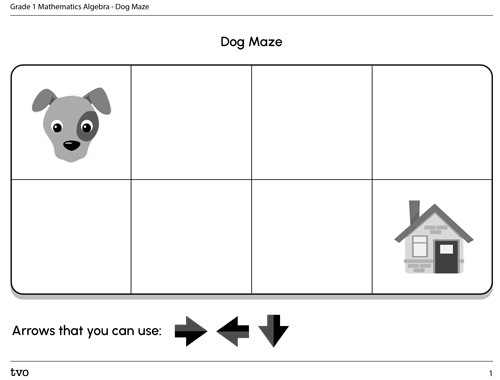Minds On
Directional language

Answer the following questions:
- What are directions?
- Why are directions important?
- How do directions help us in everyday life?
Record your ideas in a notebook or a method of your choice.
Algorithms
A set of step-by-step directions is called an algorithm.
An algorithm helps us solve a problem, like how to get somewhere or how to put something together.
Action
Coding maps
In this activity we are going to figure out the algorithm, or directions, that help a dog find its way home.
The following map shows where the dog is and where its house is.
Think about different ways the dog can go to get to the house.
Each time the dog moves to a new square, it is going one step. It can go right, left, or down.
The dog can only go a direction if there is an empty square for it to move into.
To get home, the dog could go: right – right – right – down.
Is there another way the dog could go? What if the dog went down – right – right – right? Or, what if the dog went right – down – right – right?
Your turn!
Access the following fillable and printable Dog Maze document to help the dog get to the house. You can also complete this activity in your notebook or using another method of your choice.
Press ‘Rules’ to reveal and learn more about this activity.
You will be using directional arrows to create a path for the dog. You can go down, left, or right. You can use one arrow for each box. You cannot put an arrow into a box that already has an arrow!
If you make a mistake, you can start over.
Did the dog find his way home? What path did you take?
Press ‘Answer 1’ to reveal one possible path you could have taken.

Let’s test out an algorithm for this map. The algorithm is:

Go back and try this algorithm in the Dog Maze. Does this lead the dog home?
Press ‘Answer 2’ to reveal the answer when you are done testing your algorithm.
The algorithm didn’t work! The dog tried to go back into a space that already had an arrow in it. This is what the algorithm could be:

Consolidation
Find the correct algorithm
We can read and follow algorithms to see if they work.
Now you decide!
Which algorithm is the best one to solve each problem? Select the correct answer, then press “Check Answer” to see how you did.
Reflection
How do you feel about what you have learned in this activity? Which of the next four sentences best matches how you are feeling about your learning? Press the button that is beside this sentence.
I feel...
Now, record your ideas about your feelings using a voice recorder, speech-to-text, or writing tool.
